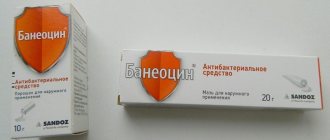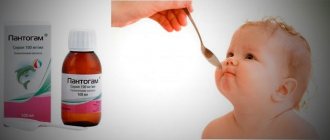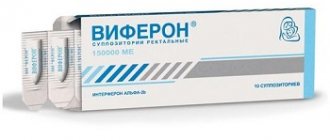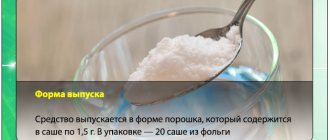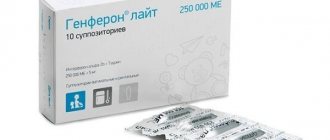Today in pharmacies you can find many antibiotics that have a different spectrum of effects. However, only a few of them can be used to treat children. The drug Azithromycin 250 belongs to such medications.
The antibiotic Azithromycin 250 can be used to treat children.
Release form and composition
The drug enters the pharmaceutical market in the form of gelatin capsules or tablets of 250 mg of the active ingredient (azithromycin).
The drug is sold in the form of gelatin capsules or tablets of 250 mg of the active ingredient (azithromycin).
Additional components: low molecular weight povidone, lactose, magnesium stearate, aerosil (colloidal silicon dioxide).
Capsules (tablets) are placed in plates of 6 or 10 pieces. There is 1 package in a cardboard box. In addition, the drug can be packaged in polymer bottles or glass jars of 6 or 10 pcs.
What is Azithromycin?
For a child, the choice of drug is very important. This medication is an antibiotic. It represents a group of macrolides. The medication has a bactericidal and bacteriostatic effect on the patient's body. The drug is available in dosages of 100, 125, 250 and 500 milligrams. The main active ingredient is azithromycin. Depending on the form of release, the medicine may have additional components. Thus, the medicine is available in the form of gelatin-coated capsules, hard tablets, suspension and powder for its preparation.
Azithromycin for a child is one of the most frequently prescribed drugs. It is very easy to use and can give a quick positive effect. This product is also quite safe for children's bodies.
Pharmacological properties
Pharmacodynamics
The active component of the drug is azalide and has a bacteriostatic effect. It forms bonds with ribosomal elements, inhibiting peptide translocase and protein synthesis in bacterial cells, preventing their reproduction and viability.
The drug is active against the following pathogenic microorganisms:
- gram-positive: Streptococcus agalactiae, Staphylococcus epidermidi, Streptococcus spp., Streptococcus pneumoniae, Streptococcus pyogenes;
- gram-negative: Neisseria gonorrhoeae, Gardnerella vaginalis, Legionella pneumophila, Moraxella catarrhalis, Bordetella parapertussis.
- a number of anaerobic microorganisms: Bacteroides bivius, Clostridium perfringens, Peptostreptococcus spp.;
- others: Treponema pallidum, Chlamydia pneumoniae, Borrelia burgdorferi, Mycoplasma pneumoniae, Mycobacterium avium complex, Ureaplasma urealyticum.
The medication is not active against gram-positive bacteria that are resistant to erythromycin.
The medication is not active against gram-positive bacteria that are resistant to erythromycin.
Pharmacokinetics
The medicine has a high degree of absorption. The maximum plasma concentration is reached in 2.5-3 hours.
In tissues and cells, the level of the active substance is 10-50 times higher than in blood plasma.
The ingredient easily overcomes the BBB and enters the skin, soft tissues, respiratory system, genitourinary organs and tissues, as well as the prostate gland. Cumulation of the substance is observed in lysosomes.
The half-life is from 14 to 20 hours. Excreted in bile and urine. Food reduces the highest plasma concentration of the substance by 52%.
The drug is excreted from the body with bile and urine.
Side effects
Azithromycin belongs to the group of macrolides. Such antibiotics have a fairly wide range of effects on harmful bacteria. After entering the patient’s body, they are transported to the site of inflammation and penetrate both tissue barriers and cell walls.
In a moderate dose, Azithromycin can suppress the formation of proteins in bacterial cells, which slows down their reproduction. A high concentration of the drug has a bactericidal effect (destroys the pathogen).
Taking Azithromycin is effective for infection:
- Staphylococcus aureus.
- Staphylococcus epidermidis.
- Streptococci of group B and other groups.
- Pneumococcus.
- Pyogenic streptococcus.
- Haemophilus influenzae.
- Moraxella.
- Whooping cough stick.
- Parawhooping cough stick.
- Campylobacter.
- Legionella.
- Gonococcus.
- Gardnerella.
- Bacteroides.
- Peptostreptococcus.
- Clostridia.
- Chlamydia.
- Mycobacteria.
- Ureaplasma.
- Mycoplasma.
- Treponema pallidum.
- Borrelia.
The child's body sometimes reacts to Azithromycin with the appearance of:
- Dizziness.
- Excited state.
- Fatigue.
- Drowsiness.
- Feelings of tingling or numbness in the limbs.
- Headache.
- Anxious mood.
- Conjunctivitis.
- Sleep disorders.
- Chest pain.
- Feelings of strong heartbeats.
- Nausea.
- Flatulence.
- Jaundice.
- Liquid stool.
- Abdominal pain.
- Vomiting.
- Decreased appetite.
- Inflammation of the stomach.
- Candidiasis of mucous membranes.
- Skin itching.
- Muscle pain.
- Urticaria.
- Skin rashes.
More rare side effects of azithromycin drugs are:
- Hearing impairment or tinnitus.
- Deterioration of vision.
- Constipation.
- Liver damage.
- Intestinal inflammation.
- Nephritis.
- Quincke's edema.
- Increased sensitivity to ultraviolet radiation.
- Changes in blood tests.
- Anaphylactic shock.
- Pancreatitis.
If a child is already taking any medications and has been prescribed Azithromycin, this requires attention from the pediatrician, because many drugs should not be combined with such an antibiotic. For example, if you give your baby antacids, this will impair the absorption of azithromycin and affect the results of treatment.
Other antibacterial agents also affect the activity of the drug, for example, the prescription of tetracycline will enhance the effect of Azithromycin, and lincomycin antibiotics will weaken its therapeutic effect.
Contraindications
The drug is not prescribed to patients weighing less than 45 kg, as they have difficulty selecting the dosage. However, in this case, you can use a suspension.
It is prohibited to take capsules for the following conditions and diseases:
- severe kidney and liver disorders;
- individual intolerance (hypersensitivity) to the drug.
The antibiotic is prescribed with caution for moderate pathologies of the kidneys and liver, arrhythmia and a tendency to it.
Advantages of BC Leon
The bookmaker offers attractive conditions for sports betting. In reviews of BC Leon, bettors highlight the following advantages of the office:
- legal work in Russia;
- Russian version of the site;
- minimum bet 10 rubles;
- 1000+ events in pre-match and Live;
- prompt work of the support service;
- mobile version and application;
- profitable bonus offers;
- fast payouts of winnings.
Navigation on the site of BC Leon
- home — one-click transition to the main page of the resource;
- documents - here is a license, a certificate of membership in an SRO, rules for accepting bets, a policy on the protection of personal data and other documentation;
- rules - a section with a detailed description of the terms in betting and the terms of cooperation with the bookmaker;
- about the company - legal information about the office;
- bonuses - overview of the conditions for receiving a welcome bonus;
- promotions - current bonus offers;
- results - statistics on completed matches with convenient sorting by sport, date;
- mobile version - instructions for installing the mobile application on smartphones running Android and iOS;
- help - answers to common questions and a feedback form for submitting a support request.
Registration and identification in BC Leon
Access to sports betting opens after registration and identification. Creating an account involves filling out a form indicating personal and contact information. The information must be reliable so that there are no problems with identity verification.
Identification is carried out in 2 stages:
- on the bookmaker’s website - confirm your phone number, upload a passport photo in your account settings;
- at the Second TSUPIS (Qiwi Bank) - you can go through identification in the Euroset salon, at the Qiwi office and Contact system points.
Line and odds in BC Leon
The bookmaker offers betting on football, hockey, basketball and other matches. A complete list of disciplines is presented on the left side of the site. For the convenience of users, they are arranged in alphabetical order.
The painting depends on the significance of the match. For events in less popular disciplines, the bookmaker offers standard outcomes: a draw, victory of the first or second team. For top matches, totals, handicaps, double chances and other markets are available.
Margins range from 1.5% to 3.5% for popular sports, but can reach 10% for less common ones. Live is well designed. Hundreds of events of varying significance are available every day. The margin is 8-10%.
Bonuses at BC Leon
The bookmaker welcomes new clients with a welcome bonus. Newcomers can count on 2 gifts at once:
- freebet 150 rubles when registering on the site with a current promotional code;
- 100% bonus with a limit of 20,000 rubles on the first deposit.
Bookmaker Leon regularly runs promotions in which players receive free bets and bonuses. At the moment, there is a daily drawing of cash prizes for fans of Live bets and the issuance of bonuses for a series of 10 victories in a row.
How to use Azithromycin 250
Tablets and capsules are intended to be taken orally, 50-60 minutes before meals or 120-130 minutes after meals.
If a dose is missed, the next dose should be taken as soon as possible, and subsequent doses should be taken after 24 hours.
Dosage at different ages
Adult patients and children over 12 years of age are given doses of 500 mg of the drug once a day for 3 days.
For patients 6-12 years of age, dosages of Azithromycin are calculated at 10 mg per 1 kg of weight 1 time per day.
For patients 6-12 years of age, dosages are calculated at 10 mg per 1 kg of weight 1 time per day.
Lyme disease begins to be treated with a dose of 1 g on the first day, after which the amount of medication is reduced to 500 mg/day.
Features of the drug
The drug "Azithromycin" is the newest antibiotic from the macrolide group. It stops the production, growth, reproduction and spread of harmful microorganisms. Has a bacteriological effect.
In its pharmacological properties, this medicine is close to drugs of the penicillin group.
It is more effective and efficient in the treatment of inflammatory processes. It has a more gentle and gentle effect on the child’s body. The drug provokes much fewer side effects, especially those associated with disruption of the digestive process, and also has much less toxicity.
The drug "Azithromycin" is absorbed quite quickly, is resistant to an acidic environment, quickly spreads throughout the body and is not destroyed by gastric juice. The medicine can penetrate the respiratory system, skin and soft tissues.
The principle of action of this antibiotic is that it does not allow the cells of microbial pathogens to synthesize proteins, and without this they simply cannot exist. Over the course of 1-3 days, a high concentration of the drug is formed in the area of inflammation, which contributes to the rapid suppression of infectious agents. The elimination period of the drug is quite slow and takes approximately 5-6 days, which contributes to its long-term preservation in the area of inflammation. Azithromycin is excreted in urine and bile.
When children use Azithromycin (250 mg), they need to undergo periodic examination to exclude the occurrence of serious side effects.
special instructions
Can Azithromycin be given to children?
For children, dosages are calculated according to their body weight.
It is not advisable to use antibiotics in pregnant women.
Is Azithromycin possible during pregnancy and lactation?
It is not advisable to use an antibiotic in pregnant women unless the benefits outweigh the possible risks.
When prescribing an antibiotic drug, breastfeeding should be avoided.
For impaired renal function
The antibiotic is used with caution. In case of severe pathologies of the organ, it is not prescribed.
For liver dysfunction
For moderate disorders, the antibiotic is prescribed with caution. In severe cases, the use of the medication is prohibited.
In severe cases of liver pathologies, the use of the medication is prohibited.
Indications for use in children
Azithromycin is prescribed for:
- bacterial infections of the nasopharynx: sinusitis, sinusitis, otitis media with and without pus, laryngitis, pharyngitis, tonsillitis;
- infectious diseases: scarlet fever, whooping cough, hemophilus influenzae, borreliosis;
- diseases of the respiratory organs: tracheitis, bronchitis, pneumonia;
- gastrointestinal diseases: gastritis, ulcers;
- lesions of the skin: dermatitis, ulcers, erysipelas.
The effectiveness of treatment depends on the pathogen that caused the disease. Before prescribing antibiotic therapy, the doctor must take a test - a smear, culture or scraping - to identify the bacteria and its sensitivity to antibiotics.
Often, a medical professional prescribes medications based only on symptoms. Many modern drugs have a wide spectrum of action. In most cases they kill pathogenic flora, but sometimes they are ineffective. Then the doctor prescribes an antibiotic with an active substance of a different pharmacological group.
Drug interactions
The antibiotic reacts with the following substances and drugs:
- antacids - reduce the plasma level of the active substance by 25-30%;
- Triazole, Indinavir, Cotrimoxazole, Cimetidine - there is a risk of a decrease in their effect;
- Cyclosporine, Digoxin - there is a possibility of reducing their absorption;
- Warfarin – it is necessary to monitor the prothrombin period with such a combination;
- Terfenadine – arrhythmia appears;
- Rifabutin – increases the risk of leukopenia and neutropenia;
- ergot alkaloids – ergotism (poisoning) develops.
Analogs
A similar active ingredient is contained in the following products:
- Sumamed;
- Azimicin;
- Chemomycin;
- Zithrocin;
- Ecomed.
An analogue of Azithromycin 250 is the drug Sumamed.
The following drugs have a similar principle of action:
- Rovamycin;
- Macropen;
- Lecoclair;
- Arvicin;
- Fromilid;
- Oleandomycin;
- Erythromycin.

